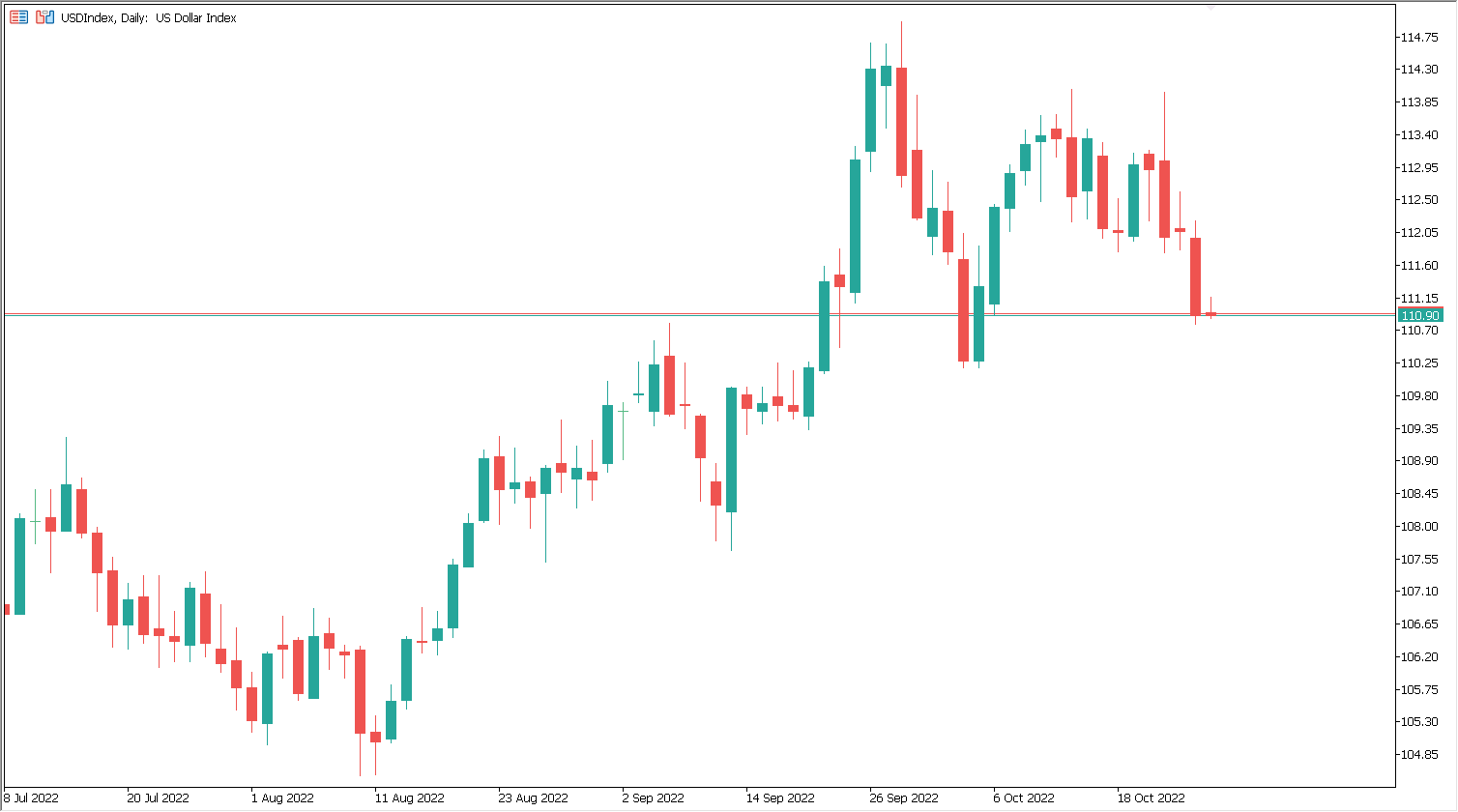Incoming data from the U.S. economy seems to indicate that the Fed's earlier interest rate hikes may already be hinting at a slowdown. It’s about a slowdown in industry, as well as in the real estate market, where negative surprises seem that have emerged. These could lead to a slowdown in the pace of hikes by the Fed, which is what the market seems to be hoping for at the moment.

Worse situation in US manufacturing
S&P Global US Manufacturing PMI data released this week showed a reading of 49.9 points in October 2022, compared to 52 in September, and was below market forecasts of 51 points. A reading below 50 points, according to the survey's methodology, signifies a contraction in the manufacturing sector, the first time this has happened since June 2020. New orders fell, signaling a possible drop in demand, with manufacturers stressing that high inflation and inventory build-up from earlier in the year may be contributing to this. The rise in the value of the dollar also caused export demand to fall at the fastest pace since May 2020. Meanwhile, employment grew at a slower pace. In addition, production costs accelerated after a four-month period of mild inflation, mainly due to material shortages and higher wages. Looking ahead, price pressures and expectations of higher interest rates caused sentiment in the industrial sector to deteriorate, the Markit Economic survey showed.
Weakening real estate market in the United States
The 20-city house price index measured by the S&P CoreLogic Case-Shiller in the US rose 13.1% y/y in August 2022. Thus, the house price growth rate was the lowest since February 2021 and below forecasts at 14.4%. This also marks the fourth consecutive month of slowing house price growth in the United States. All 20 cities posted lower price increases in August, with Miami (28.6%), Tampa (28%) and Charlotte (21.3%) posting the highest year-over-year increases, while San Francisco (5.6%), Washington (7.4%) and Minneapolis (7.6%) posted the lowest. Meanwhile, the National Composite Index rose 13% in August, down from 15.6% in July, the biggest slowdown on record. Given the continued outlook for a challenging macroeconomic environment, home prices may continue to slow," said Craig J. Lazzara, Managing Director at S&P DJI as quoted by tradingeconomics.

Source: Conotoxia MT5, USDIndex, Daily
The dollar exchange rate seems falling
Since the beginning of the week, in fact l since Friday and the possible intervention of the Japanese authorities, the dollar exchange rate seems to be falling. On Wednesday morning, the USD index slipped below the 111-point level. After falling 1% during the previous session. The USD's weakness may be due to the market's growing conviction that the US Federal Reserve would be less aggressive in the coming months. After a widely expected 75-basis-point rate hike in November, Fed officials are probably considering a smaller hike in December amid concerns about excessive monetary tightening, WSJ reported. The aforementioned weaker U.S. data this week, signaling that previous rate hikes may have already had an impact on the economy, seem to support such a view. It also appears that countries such as Japan and China are fed up with a strengthening US dollar. The former has already been expected to intervene twice in the forex market, while the latter was expected to intervene yesterday. As Reuters reported, China's major state-owned banks have been selling U.S. dollars on both the domestic and foreign markets to support the weakening yuan.
Daniel Kostecki, director of the Polish branch of Conotoxia Ltd. (Cinkciarz.pl investment service)
Read more reviews and open a demo account at invest.conotoxia.com
Materials, analysis and opinions contained, referenced or provided herein are intended solely for informational and educational purposes. Personal opinion of the author does not represent and should not be constructed as a statement or an investment advice made by Conotoxia Ltd. All indiscriminate reliance on illustrative or informational materials may lead to losses. Past performance is not a reliable indicator of future results.
CFDs are complex instruments and come with a high risk of losing money rapidly due to leverage. 75,21% of retail investor accounts lose money when trading CFDs with this provider. You should consider whether you understand how CFDs work and whether you can afford to take the high risk of losing your money.


